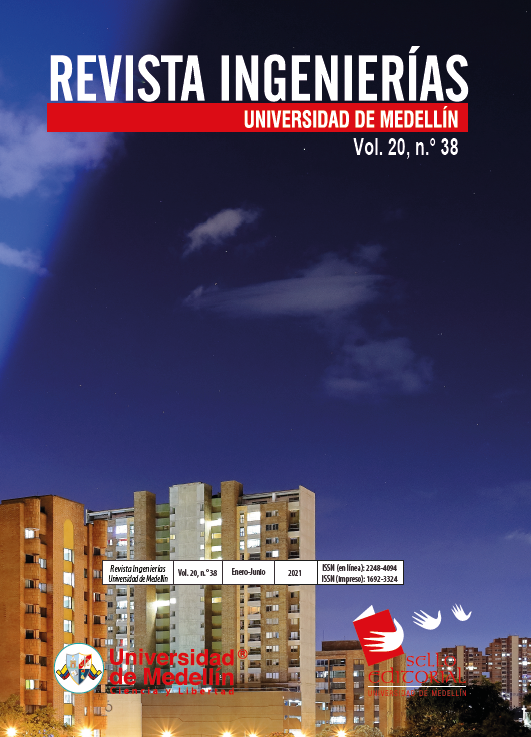Recommendation Systems in Education: A review of Recommendation Mechanisms in E-learning Environments
DOI:
https://doi.org/10.22395/rium.v20n38a9Keywords:
education, e-learning, environments, learning styles, machine learning, MOOCAbstract
In recent years, new trends and methodologies have emerged that greatly favor the education sector. E-learning as an alternative to regular teaching and learning processes has transformed the educational dynamics thanks to the inclusion of MOOCs, personal learning environments, allowing the educational process to be carried out at a personalized level where the focus is on learning styles and the profile of the student. This article presents a review of current works around machine learning mechanisms to make recommendations in the educational environment, where it is found that besides the discovery of the student’s learning style, it is important to know their level of knowledge and learning speed, in addition to the tools used by the student to carry out their studies. Finally, the opportunity for implementation and research of these issues in Colombia is highlighted.
Downloads
References
M. S. RamÃrez-Montoya and F. J. GarcÃa-Peñalvo, “Presentación. La integración efectiva del dispositivo móvil en la educación y en el aprendizaje,†RIED. Rev. Iberoam. Educ. a Distancia, vol. 20, 2, p. 29, 2017. DOI: http://dx.doi.org/10.6018/red/52/1
R. Avello MartÃnez and J. M. Duart, “Nuevas tendencias de aprendizaje colaborativo en e-learning: Claves para su implementación efectiva,†Estud. pedagógicos, vol. 42, 1, pp. 271–282, 2016. DOI: http://dx.doi.org/10.4067/S0718-07052016000100017
K. Schwab, “El surgimiento de nuevas tecnologÃas - Archivo Digital de Noticias de Colombia y el Mundo desde 1.990 - eltiempo.com,†2016. [Online]. Available: https://www.eltiempo.com/archivo/documento/CMS-16759801. [Accessed: 22-Feb-2019].
Y. RamÃrez León, “Presentación de contenidos en entornos educativos virtuales basada en la adaptación a los estilos de aprendizaje,†Etic@Net, vol. 11, 1695–324X, pp. 306–321, 2011.
M. I. Jordan and T. M. Mitchell, “Machine learning: Trends, perspectives, and prospects.,†Science, vol. 349, 6245, pp. 255–60, 2015. DOI: 10.1126/science.aaa8415
V. Sanchez-anguix, R. Chalumuri, and V. Julian, “A multi-objective evolutionary proposal for matching students to supervisors,†vol. 800, pp. 94–102, 2019. DOI: https://doi.org/10.1007/978-3-319-94649-8_12
S. K. Howard, J. Ma, and J. Yang, “Student rules: Exploring patterns of students’ computerefficacy and engagement with digital technologies in learning,†Comput. Educ., vol. 101, pp. 29–42, 2016. DOI: 10.1016/j.compedu.2016.05.008
C. K. Pereira, F. Campos, V. Ströele, J. M. N. David, and R. Braga, “BROAD-RSI – educationalrecommendersystemusing social networksinteractions and linked data,†J. Internet Serv. Appl., vol. 9, 1, 2018. DOI: https://doi.org/10.1186/s13174-018-0076-5
M. Birjali, A. Beni-Hssane, and M. Erritali, “A novel adaptive e-learning model based on Big Data by using competence-based knowledge and social learner activities,†Appl. SoftComput. J., vol. 69, pp. 14–32, 2018. DOI: 10.1016/j.asoc.2018.04.030
M. Tahmasebi, F. FotouhiGhazvini, and M. Esmaeili, “Implementation and Evaluation of a Resource-Based Learning Recommender Based on Learning Style and Web Page Features,†J. Web Eng., vol. 17, 4, pp. 284–304, 2018.
V. Bradac and B. Walek, “A comprehensive adaptive system for e-learning of foreign languages,†ExpertSyst. Appl., vol. 90, pp. 414–426, Dec. 2017. DOI: https://doi.org/10.1016/j.eswa.2017.08.019
P. K. Udupi, P. Malali, and H. Noronha, “Big data integration for transition from e-learning to smart learning framework,†2016 3rd MEC Int. Conf. Big Data Smart City, 2016.
N. D. H. Cuong, N. Arch-Int, and S. Arch-Int, “FUSE: A Fuzzy-Semantic Framework for Personalizing Learning Recommendations,†Int. J. Inf. Technol. Decis. Mak., vol. 17, 04, pp. 1173–1201, 2018. DOI: https://doi.org/10.1142/S0219622018500220
K. Takaoka, K. Yamazaki, E. Sakurai, K. Yamashita, and Y. Motomura, “Development of an integrated AI platform and an ecosystem for daily life, business and social problems,†Adv. Intell. Syst. Comput., vol. 787, pp. 300–309, 2019. DOI: https://doi.org/10.1007/978-3-319-94229-2_29
V. Kant, T. Jhalani, and P. Dwivedi, “Enhanced multi-criteria recommender system based on fuzzy Bayesian approach,†Multimed. Tools Appl., vol. 77, no. 10, pp. 12935–12953, 2018. DOI: https://doi.org/10.1007/s11042-017-4924-2
M. B. Lopez, A. J. H. Montes, R. V. Ramirez, and G. A. Hernandez, “EmoRemSys: Sistema de recomendación de recursos educativos basado en detección de emociones,†RISTI - Rev. Ibérica Sist. e Tecnol. Informação, 17, Mar. 2016. DOI: 10.17013/RISTI.17.80-95
B. D. Nye, “Intelligent tutoring systems by and for the developing world: A review of trends and approaches for educational technology in a global context,†Int. J. Artif. Intell. Educ., vol. 25, 2, pp. 177–203, 2015. DOI: https://doi.org/10.1007/s40593-014-0028-6
A. Klašnja-Milićević, M. Ivanović, B. Vesin, and Z. Budimac, “Enhancing e-learning systems with personalized recommendation based on collaborative tagging techniques,†Appl. Intell., vol. 48, 6, pp. 1519–1535, 2018. DOI: https://doi.org/10.1007/s10489-017-1051-8
E. R. Núñez-Valdez, D. Quintana, R. González Crespo, P. Isasi, and E. Herrera-Viedma, “Arecommender system based on implicit feedback for selective dissemination of e-books,†Inf. Sci. (Ny)., vol. 467, pp. 87–98, 2018. DOI: https://doi.org/10.1016/j.ins.2018.07.068
L. X. Li, S. Soraya, and A. Rahman, “Students’ learning style detection using tree augmented naïve Bayes Subject Category: Subject Areas :,†R. Soc. Open Sci., 2018. DOI: 10.1098/rsos.172108
M. W. Rodrigues, S. Isotani, and L. E. Zárate, “Educational Data Mining: A review of evaluation process in the e-learning,†Telemat. Informatics, vol. 35, 6, pp. 1701–1717, 2018. DOI: 10.1016/j.tele.2018.04.015
S. KumarBasak, M. Wotto, and P. Bélanger, “E-learning, M-learning and D-learning: Conceptual definition and comparative analysis,†E-Learning Digit. Media, vol. 15, 4, pp. 191–216, 2018. DOI: 10.1177/2042753018785180
S. Assami, N. Daoudi, and R. Ajhoun, “Personalization criteria for enhancing learner engagement in MOOC platforms,†IEEE Glob. Eng. Educ. Conf. EDUCON, vol. 2018–April, pp. 1265–1272, 2018. DOI: 10.1109/EDUCON.2018.8363375
O. M. Spositto, M. E. Etcheverry, H. L. Ryckeboer, and J. Bossero, “Aplicación de técnicas de minerÃa de datos para la evaluación del rendimiento académico y la deserción estudiantil,†2008.
J. Sujatha and S. P. Rajagopalan, “Performance evaluation of machine learning algorithms in the classification of Parkinson disease using voice attributes,†Int. J. Appl. Eng. Res., vol. 12, 21, pp. 10669–10675, 2017.
A. E. S. Carvalho Brito et al., 15th European Concurrent Engineering Conference 2008, ECEC ’2008 [and] 5th Future Business Technology Conference, FUBUTEC ’2008 : April 9-11, 2008, Porto, Portugal. Eurosis-Eti, 2008.
Downloads
Published
How to Cite
Issue
Section
License
The total or partial reproduction of the contents of the journal for educational, research, or academic purposes is authorized as long as the source is cited. For reproduction for other purposes, express authorization from the Sello Editorial Universidad de MedellÃn is required.

